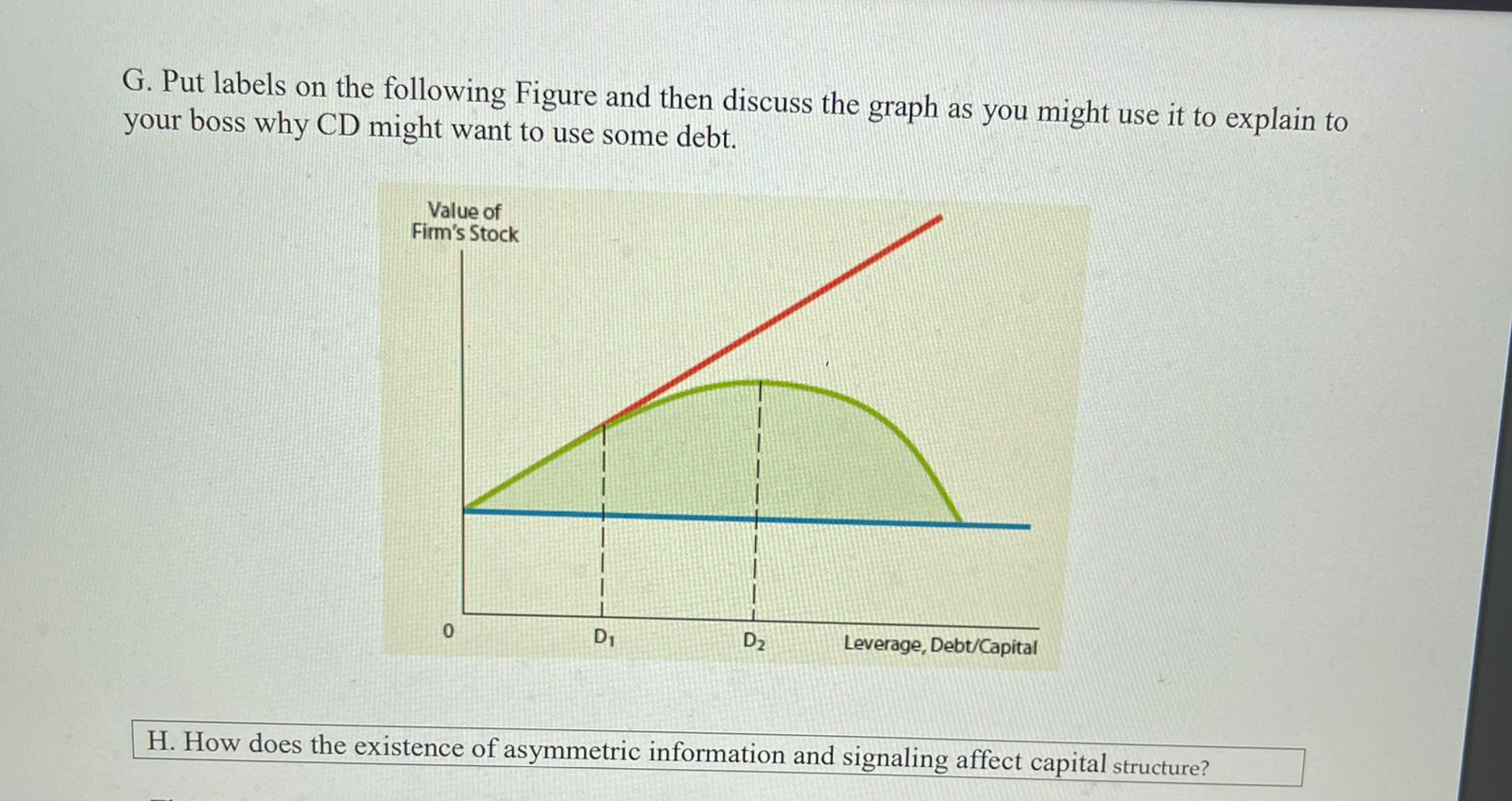Answered step by step
Verified Expert Solution
Question
1 Approved Answer
Computer applications in Finance Ps : Solving on Excel Please Optimal Capital Structure ( LO# 3 ) _ ( ) When the weighted average cost
Computer applications in Finance
Ps : Solving on Excel Please
Optimal Capital Structure LO#
When the weighted average cost of capital WACC is calculated, It is assumed that the firm had
a specific target capital structure. However, target capital structures often change over time, such
changes affect the risk and cost of each type of capital, and all this can change the WACC.
Moreover, a change in the WACC will affect capital budgeting decisions and, ultimately, the stock
price. Many factors influence capital structure decisions, and, as by turn, determining the optimal
capital structure is not an exact science. Therefore, even firms in the same industry often have
dramatically different capital structures. The debt presents a crucial factor that effects on risk and
on the optimal capital structure. In this sense, the finance people should understand and explain
why there may be differences in a firm's capital structure when measured on a bookvalue basis,
a marketvalue basis, or a target basis. They have to distinguish between business risk and financial
risk, and explain the effects that debt financing has on the firm's expected return and risk. In the
same vein, they have to understand the analytical framework used when determining the optimal
capital structure. Moreover, they have to be aware of capital structure theory, and use it to explain
why firms in different industries tend to have different capital structures.
In the light of the above discussion. Apply your understanding of the topic in regards to the
following case:
Assume that you have just been hired as business manager of Campus Deli CD which is located
adjacent to the campus. Sales were $ last year, variable costs were of sales, and
fixed costs were $ Therefore, EBIT totaled $ Because the university's enrollment
is capped, EBIT is expected to be constant over time. Because no expansion capital is required,
CD distributes all earnings as dividends. Invested capital is $ million, and shares are
outstanding. The management group owns about of the stock, which is traded in the over
outstanding. The management group owns about of the stock, which is traded in the over
thecounter market.
CD currently has no debt it is an allequity firm and its shares outstanding sell at a price
of $ per share, which is also the book value. The firm's federalplusstate tax rate is On
the basis of statements made in your finance text, you believe that CDs shareholders would be
better off if some debt financing was used. When you suggested this to your new boss, she
encouraged you to pursue the idea but to provide support for the suggestion.
In today's market, the riskfree rate, rRF is and the market risk premium, RPM is CDs
unlevered beta, bu is CD currently has no debt, so its cost of equity and WACC is If
the firm was recapitalized, debt would be issued and the borrowed funds would be used to
repurchase stock. Stockholders, in turn, would use funds provided by the repurchase to buy
equities in other fastfood companies similar to CD
Questions
A
What is business risk? What factors influence a firm's business risk?
What is operating leverage, and how does it affect a firm's business risk?
What is the firm's return on invested capital ROIC
B
What do the terms financial leverage and financial risk mean?
How does financial risk differ from business risk?
C
To develop an example that can be presented to CDs management as an illustration,
consider two hypothetical firms: Firm U with zero debt financing and Firm L with
$ of debt. Both firms have $ in invested capital and a federal
plusstate tax rate, and they have the following EBIT probability distribution for next
year:
Complete the partial income statements and the firms' ratios in following Table
Income Statements and Ratios
Firm U Firm L
Total capital $ $ $ $ $ $
Equity $ $ $ $ $ $
Probability
Sales $ $ $ $ $ $
Oper. costs
EBIT $ $ $ $ $ $
Int.
EBT $ $ $ $ $ $
Taxes
Net income $ $ $ $ $ $
ROIC
ROE
TIE
EROIC
EROE
ETIE
ROIC
ROE
TIE
C Be prepared to discuss each entry in the table and to explain how this example
illustrates the
G Put labels on the following Figure and then discuss the graph as you might use it to explain to your boss why CD might want to use some debt.
H How does the existence of asymmetric information and signaling affect capital structure?

Step by Step Solution
There are 3 Steps involved in it
Step: 1

Get Instant Access to Expert-Tailored Solutions
See step-by-step solutions with expert insights and AI powered tools for academic success
Step: 2

Step: 3

Ace Your Homework with AI
Get the answers you need in no time with our AI-driven, step-by-step assistance
Get Started


